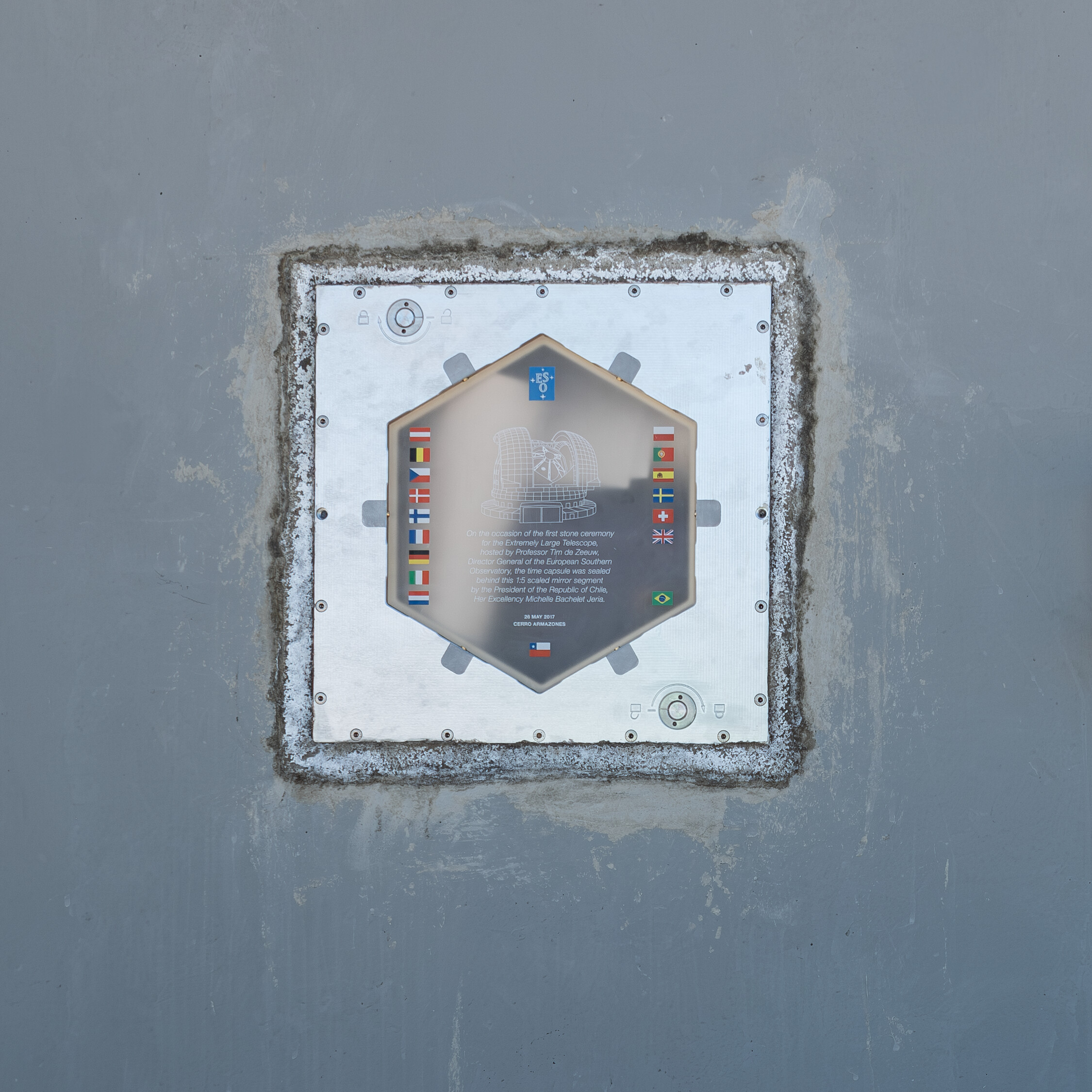Earlier this month, representatives of the European Southern Observatory (ESO) and Chile buried a time capsule at the construction site of the Extremely Large Telescope (ELT), which is located in Cerro Armazones in Chile’s Atacama Desert.
The Extremely Large Telescope is halfway through construction and is on schedule to begin observing the universe in a few years. It will be the largest optical and infrared telescope in the world and will help us answer some of the biggest questions we have about the cosmos. From the possibility of life on other planets to the first stars and galaxies, the “biggest eye on the sky” will provide new insights into the universe.
Its primary mirror will be made of 798 hexagonal segments that will be combined into a single structure 39.3 meters (130 feet) across. It will get about 250 times the light that the Hubble Space Telescope can gather, and it is estimated that its images will be 16 times sharper.
The plaque that seals the location of the time capsule.
Image Credit: ESO
This year also marks the 60th anniversary of the collaboration between ESO and Chile on observatories in the Atacama Desert, so it seemed an apt year to bury the time capsule in the construction site. The capsule was actually sealed in 2017 when the first stone was laid.
It contains six drawings from school children from Antofagasta and Taltal, picturing northern Chile landscapes, astronomical objects, and ESO telescopes; two collages of photos of ESO staff; a photo book about the Atacama Desert; and a book on science with the ELT: An Expanded View of the Universe.
It also contains a commemorative pen from the Chilean government and an engraved glass plaque from the then president, Michelle Bachelet Jeria, with the quote: “Abriendo el cielo de Chile a las preguntas de todo un planeta.” This translates to: “Opening the sky of Chile to the questions of an entire planet.”
The Extremely Large Telescope is expected to be completed in 2027 with scientific observations starting the following year.
Source Link: Time Capsule Buried In Desert To Commemorate “World’s Biggest Eye On The Sky”
